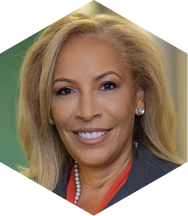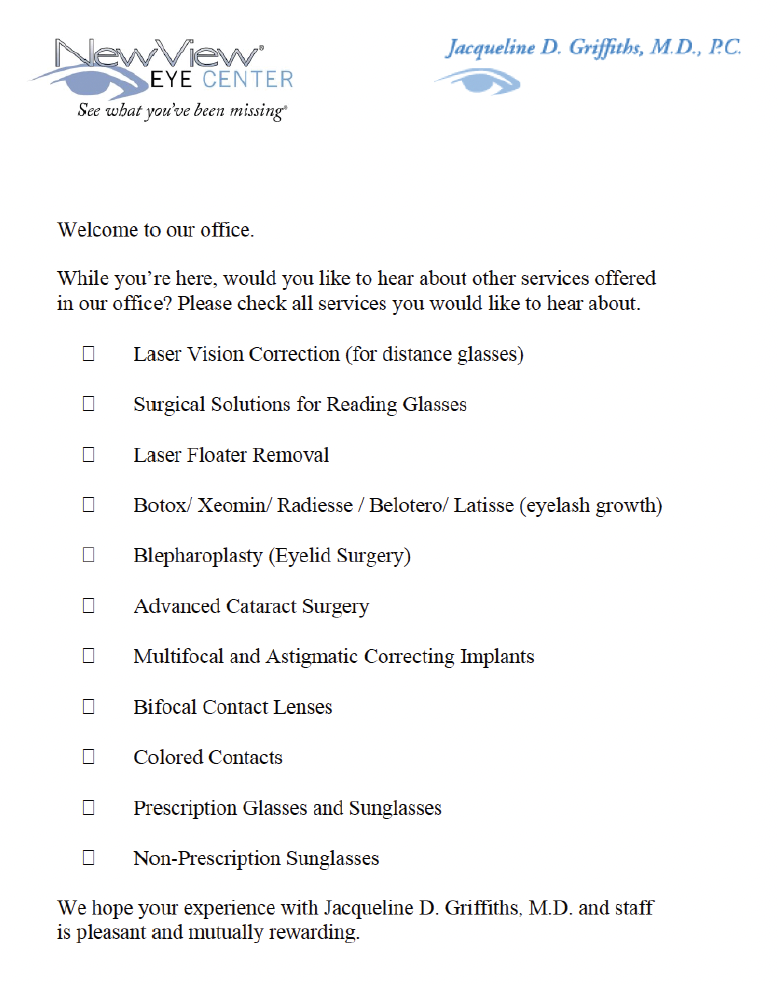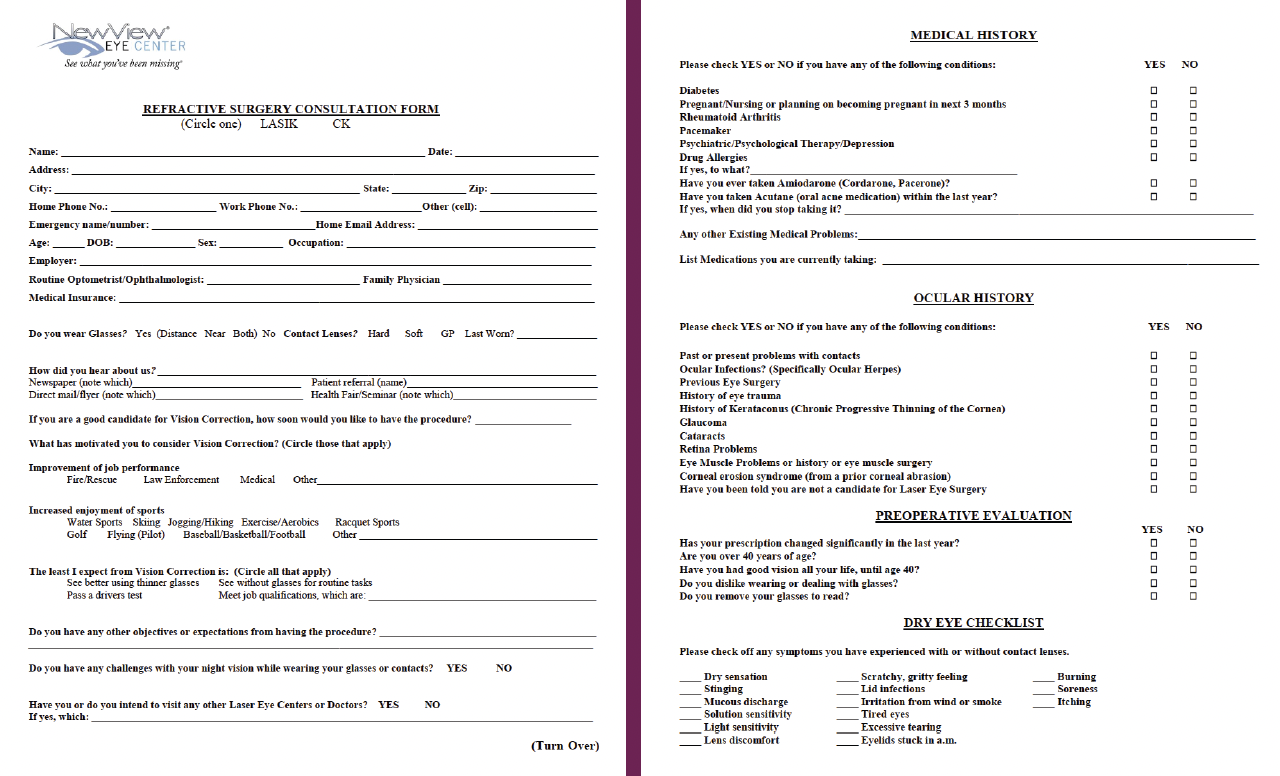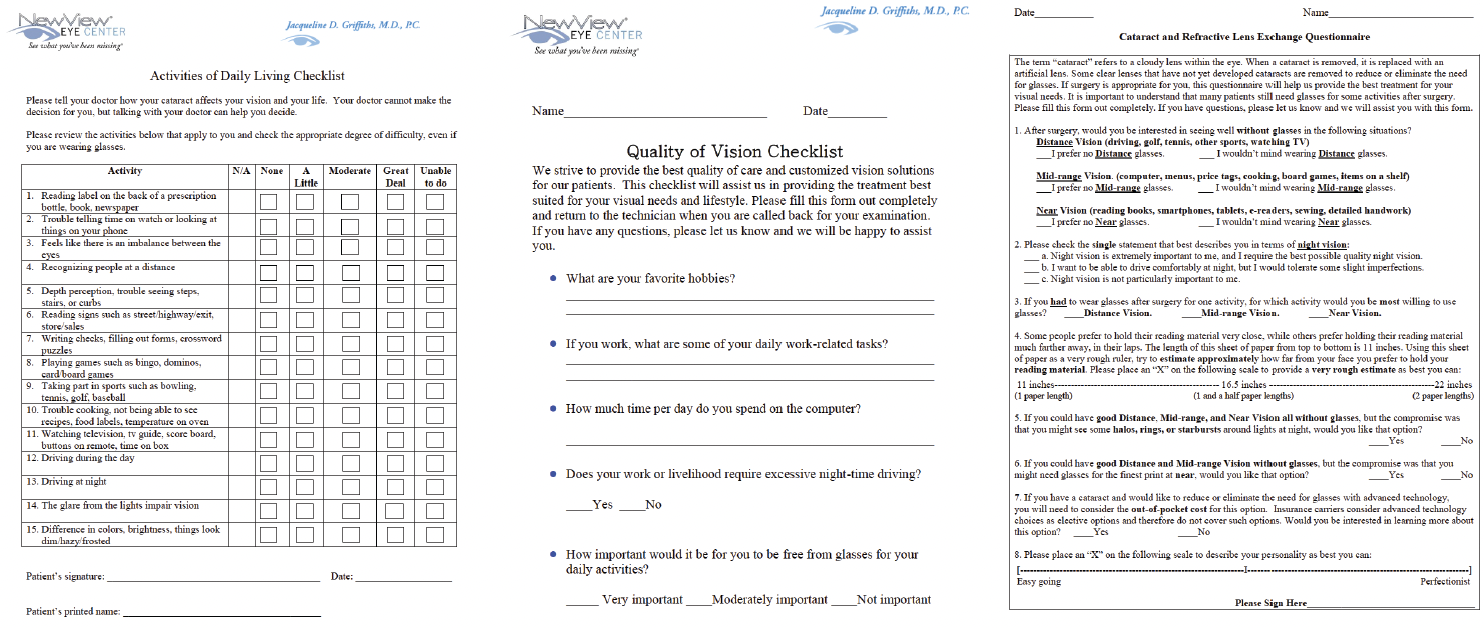
I opened my practice 22 years ago. It includes a professional corporation that has contracts with insurance providers and an S corporation that handles fee-for-service revenue. Collectively, these two corporations are known as NewView Eye Center. I incorporated ophthalmology, optometry, and opticianry into the business so that individuals seeking laser vision correction (LVC) can become long-term patients and refer their family members, colleagues, and friends for their eye care needs, including elective services.
GAUGING INTEREST FROM DAY 1
At their first visit to my office, patients receive a welcome sheet (Figure 1) that asks if they are interested in learning about the elective services we offer, including LVC, laser cataract surgery with what we call lifestyle implants, eyelid surgery, dermal fillers and neuromodulators, laser floater removal, and specialty contact lenses (eg, multifocal, hybrid, scleral, colored, toric). Patients are asked to circle the one(s) they would like to discuss, and the front desk staff shares this information with the practice’s technicians and the doctor by placing this page on top of the patient's file.

Figure 1. Patients are asked to fill out this survey to gauge their interest in elective procedures.
Laser vision correction. If a patient expresses interest in LVC, a technician performs a free consultation during the initial visit that consists of a questionnaire (Figure 2), autorefraction with keratometry, a check of their glasses prescription to determine if a large change is identified, and tomography. The doctor then reviews the results and counsels the patient regarding their eligibility for LVC. Based on the discussion, written information on LASIK, PRK, and/or epi-LASIK is given to the patient, who meets with a scheduler to discuss any remaining questions and schedule the procedure if the patient is interested in moving forward.

Figure 2. Patients who express interest in LVC fill out this consultation form.
Many patients who see my practice’s optometrist for contact lenses or glasses have expressed interest in LVC and scheduled surgery during their visit.
Lifestyle implants. I find that patients with a history of LVC are particularly interested in spectacle independence after cataract surgery, but many of my patients overall wish to reduce their dependence on spectacles. All cataract surgery patients are asked to complete a form that queries them about their activities of daily living, including their use of a computer and whether they drive at night (Figure 3). The form also includes a modified Dell questionnaire that indicates their goals, level of tolerance for phenomena such as halos and glare, willingness to pay out of pocket for upgraded services, and personality type ranging from easygoing to perfectionist.

Figure 3. Patients are asked to fill out these forms and questionnaire to assess their activities of daily living.
The information collected provides a framework for the IOL discussion. Patients receive a packet of information on cataract surgery and pricing as well as a consent form. A scheduler books a follow-up telephone conversation during which they may ask additional questions and schedule surgery.
Antiaging services. Patients may indicate an interest in antiaging services such as upper and lower blepharoplasty, neuromodulaters, and dermal fillers on the welcome sheet, or they may be inspired to ask about these services by the posters, brochures, and before-and-after photographs we have displayed in the exam rooms. In either situation, the doctor hands them a mirror and asks what they would like to improve. Patients who express interest in receiving a neuromodulator or dermal filler are treated that same day.
I find that many patients become interested in antiaging services after undergoing cataract surgery because they can see the effects of aging more clearly.
Floaters. If I identify floaters during the ophthalmic examination, I ask patients if they see them. Some say they do not see the floaters all the time and are not bothered by them. Others report that floaters adversely affect their quality of life, and these individuals want to hear about their options. Some are candidates for laser treatment and elect to undergo the procedure.
CONCLUSION
My patients appreciate the convenience afforded by a practice that can address a wide range of their eye care needs, from examinations and optical dispensing to LVC and cataract surgery to aesthetics. One-stop shopping has resulted in word-of-mouth referrals and a robust model of revenue per patient. Learning how to discuss elective options with them successfully once they are in the door is one piece of this puzzle.




